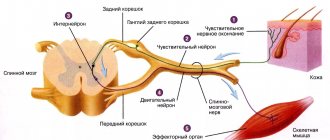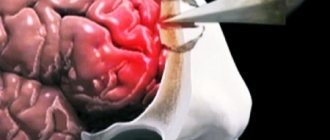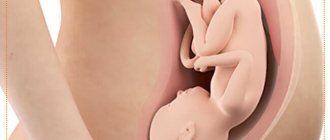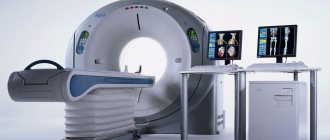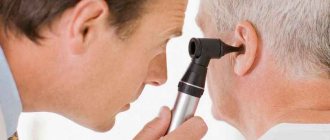Principles of nursing care for patients in coma
Read:- I GENERAL PRINCIPLES OF THERAPY OF ACUTE POISONING
- II. Primary nursing examination sheet
- II. 4. CHARACTERISTICS OF ANTIRETROVIRAL DRUGS AND PRINCIPLES OF COMBINATION OF GROUPS OF DRUGS FOR HAART
- II. General principles of immunodiagnosis of infectious diseases
- II. Organization of surgical services in Russia. Main types of surgical institutions. Principles of organizing the work of the surgical department.
- III. Principles of treatment for newly diagnosed insulin-dependent diabetes mellitus
- IX.1. General principles
- LgE-mediated diseases. Principles of disease diagnosis. Features of anamnesis collection. Hereditary aspects of allergic diseases
- V 14: Semiotics of hereditary diseases and principles of their diagnosis.
- VI. Principles of management of pregnant women with diabetes mellitus
1. Nursing examination and monitoring of patients in a coma.
It is carried out according to general rules in accordance with the requirements of the department and the prescriptions of the attending physician. The peculiarity of the examination is that the patient does not make any complaints, and we can find out the history of life and illness only with the help of relatives or friends and medical documentation.
Dynamic observation sheets are used to record observations. The standard frequency of observation and recording of results, 1 time per hour, can be changed as prescribed by the doctor. During a nursing examination, you must identify those needs of the patient whose satisfaction is impaired. Homework for the practical lesson: make a list of needs, the satisfaction of which is impaired in patients in deep coma.
2. Nursing diagnosis. Homework for the practical lesson: in accordance with the needs whose satisfaction is impaired, make a list of possible problems for a patient with a deep coma.
3. Goal setting and care planning.
In patients in a coma, the satisfaction of many needs is impaired, and there are a large number of problems. We formulate goals in accordance with the problems. A feature of the nursing process in this case is that we cannot discuss anything with the patient. We will prioritize problems in accordance with Maslow’s pyramid. A single patient care plan should be developed for all problems.
Planning includes (see related lecture):
- assistance in carrying out activities related to the needs of life,
- monitoring the state of the patient’s body functions,
- therapeutic measures,
- diagnostic procedures,
- family / loved ones education,
- advice to family/relatives.
A special feature of caring for patients in a coma is that verbal contact with the patient is impossible. Despite this, when providing nursing care, you must communicate with him as if he were a normal patient. If relatives are allowed to care, especially in neurosurgical and neurological departments, they are recommended not only to communicate with the patient, but also to tell him the news, read letters, books, let him listen to music, etc. Information should only be positive. It is also allowed, subject to conditions, to use pets.
Stages 4 and 5. The implementation of the care plan is carried out in accordance with the standards and algorithms of care. The assessment is carried out according to general rules in accordance with the goals set.
Coma
Date added: 2015-02-05 | Views: 3091 | Copyright infringement
| | | | | | | | | | | | | | | | 17 | | | | | | | | | | | | | |
“PATIENTS ARE IN PANIC AFTER A COMA”
As I already said, many patients can be brought out of coma
s. Some of them panic. The person does not understand what is happening. We have to explain that he is in intensive care, that there is no need to resist the ventilator. After this, people calm down and ask to let their relatives in. They never talk about what he went through. It's just an ordinary dream. And he can’t say anything about this. It all depends on the drugs. Some people have dreams - some are rosy, some are scary.
If a person himself cannot speak due to severe illness, but he is conscious, then we use correspondence
. We give him a piece of paper with notepads. They basically ask you to tell your relatives that everything is fine with them. They ask how long they need to ventilate. They ask the doctor's prognosis. There are also simpler dialogues with patients. We ask questions. They answer by blinking: once - yes, twice - no.
Treatment of coronavirus patients
It goes like this: we give antibiotics, antiviral drugs, perform infusion therapy, and put on IVs. We provide respiratory therapy and give blood thinners. I can say that the drugs help. Patients are then transferred from intensive care to a department with improvement.
The effect of plasma transfusion does not occur immediately
. It is needed mainly for severely ill patients. We will study this process and watch. Now there is an outflow of patients with moderate and severe disease. They have the most antibodies. Therefore, lists are being created and it is planned to call donors to donate plasma.
I will give you advice on what you need to do to avoid a ventilator if you get sick.
You need to inflate a regular balloon. Several times a day for 5-10 minutes. With trained lungs and breathing exercises, it will be easier to endure the disease. If you are infected, then this training also makes sense.
And finally. There is a strange opinion that the disease does not affect smokers
. It sticks in the same way as it does to those who haven’t smoked. I’ll say more: coronavirus should be worse in smokers.
No matter what anyone says, your immunity determines how your disease will progress.
. The thing is that good immunity will prevent the spread of infection. I was ill at the very beginning of the epidemic and was treated at the Botkin Hospital. We were already working with Covid-19 then. I immediately understood that the disease was serious, so I took all preventive measures. He even moved his two children and his wife to another apartment and lived alone. Fortunately, my illness went away quickly. For only three days I had a temperature of 39 degrees, cough and chills. And then all the symptoms went away. I did not experience any loss of smell. But many of my friends who fell ill with coronavirus later actually lost their sense of smell and taste for a week.
Nutrition in the terminal stage, with dementia or in a state of awake coma
We present a fragment of the book by Jean Domenico Borasio “On Death. What do we know? What we can do. How can we prepare for it,” published with the participation of the Vera charity foundation. The book, which became a bestseller in Switzerland, is addressed to specialists, as well as relatives of seriously ill patients.
The issue of feeding and providing the patient with sufficient fluid in the terminal stage is a very painful, emotionally difficult topic. The reason can be considered that for a person, satisfying hunger and thirst belongs to one of the very first experiences of attachment (to the mother - approx.), so that the very topic of nutrition refers to the archetypes of human life. What terrible words these are - “hunger” and “thirst”! They are “painted” like the proverbial devil, they frighten us from childhood - as a result, it is very, very difficult for all of us to calmly perceive information about the advantages and disadvantages of artificial nutrition and hydration in the terminal phase. Already in 2004, the German Federal Medical Association introduced and in 2011 approved the following of its main provisions regarding palliative care: “Care consists of palliative care and, accordingly, caring for the patient and providing basic care. This care does not always include feeding and hydration in the terminal stage, as this can be a burden for the patient. However, if the patient has subjective sensations of hunger or thirst, then thirst and hunger should be quenched”[1].
Insufficient food and fluid: what does this mean for a healthy person and for a dying person?
We believe that death occurs when we stop eating and drinking because the thought of it immediately brings to mind images and news from areas of the world where food is scarce. The consequences of malnutrition and dehydration for a healthy person are reflected in table. 5.1.
Table 5.1. Effects of malnutrition and dehydration on a healthy person
This daunting list of symptoms, however, has no significance for the stage of dying. Rather, the question that arises here is: do dying people suffer from painful feelings of hunger or thirst if they can no longer take food and liquid? And is artificial nutrition and hydration necessary in the terminal phase to prevent this suffering? The answer in both cases is: no.
“The death of a loved one is an experience that is important to go through correctly” Psychologist Oksana Orlova about the feelings, fears and needs of a dying person and his loved ones Oksana Orlova
In the terminal phase, especially in older people, the body consumes more energy than it can take in (the so-called catabolic metabolic state) because the body can no longer process even normal amounts of food. A high-calorie diet will no longer help here, so weight loss cannot be avoided at the end of life. To quench hunger and thirst, an insignificant amount of food and liquid is already enough. During the dying process, patients usually do not experience hunger.
The feeling of thirst at the end of life occurs due to dryness of the oral mucosa, and not due to a lack of fluid. Dry mouth can be caused by medications, fungal infections, local radiation, oxygen, or mouth breathing. Therefore, it is possible to prevent and eliminate the patient's feeling of thirst in the terminal phase by eliminating dry mouth (and not by artificial hydration).
How to prevent and eliminate dry mouth:
- Avoid medications with side effects such as drying of the oral mucosa (for example, anticholinergics).
- Regularly care for the patient's mouth and lips.
- Use artificial saliva.
- Avoid lemons/glycerin.
- Avoid oxygen supply.
- Give small ice cubes.
- Give a small amount of liquid (drop by drop).
Reducing the patient's hydration at the end of life has a number of benefits: less vomiting, less cough and mucus, less water accumulation (edema) in the tissues, lungs and abdomen, and less pain (for example, in cancer patients as a result of reduced swelling around the tumor and metastases and the associated reduction in pressure on surrounding tissues).
In addition, as a result of a reduction in the amount of fluid injected into the brain, there is an increased release of endorphins (autogenic mediators), which have an analgesic and mood-lifting effect. In general, dying in a state of mild dehydration appears to be the least burdensome form of the dying process from a physiological point of view. In contrast, terminal hydration, especially when combined with unnecessary oxygen supply, can lead to significantly increased suffering.
Interesting in this regard are the results of a study conducted in a nursing home in the Netherlands. The study involved patients with progressive dementia. As part of the experiment, it was decided to abandon artificial nutrition and hydration of patients[2].
Outcomes were assessed using a scale specifically designed for patients with dementia, which indicated increases or decreases in suffering. Due to the lack of possibility of communication with patients, the results of observation of them were used. After the decision was made to stop artificial nutrition and hydration, the scale showed a long-term, sustained decrease in the intensity of suffering. There was a clear feeling that after making this decision, the patient felt much more comfortable until the moment of death.
Another source of information is a publication from The New England Journal of Medicine about the experiences of hospice nurses working with patients who consciously refused to consume food and fluids[3].
It must be borne in mind that here we are talking about a fundamentally different situation than the situation at the dying stage: these patients, being seriously ill, were not dying and made a conscious decision to shorten their remaining life span by stopping the consumption of fluids and food. 102 out of 307 caregivers had experienced this situation at least once (in informal conversations with speakers at nursing conventions, the author of this book found that 50% of caregivers had such an experience). This means, obviously, we are talking about a frequently encountered but insufficiently taken into account phenomenon. A US study found that 85% of such patients died within 15 days. Health care providers subsequently rated these patients' dying experiences on a scale of 0 to 9 (where 0 = the worst death imaginable; 9 = the most peaceful death imaginable). The mean was 8, meaning that the patients' dying process was generally very peaceful.
Of course, in medicine, no rule is without exceptions, but each of these exceptions should be considered separately. Indications for artificial hydration and the amount of fluid administered always depend on the patient's condition at the moment. The following example illustrates this.
8 Tips for Talking to a Dying Person Theologian Glen Horst on important words, listening, and the meaning of touch Glen R. Horst
An elderly, frail lady aged 88 years was admitted to the emergency department of a large clinic with a femoral neck fracture. By that time, she had already been diagnosed with heart valve disease. After the operation, the condition worsened due to a microinfarction. She complained of suffocation and her general condition was so poor that it was decided that death was imminent and it was time to involve palliative care physicians. The X-rays showed fluid in the lung very clearly. That is why the first question was: how much fluid did the patient receive? Answer: She received 1000 ml of fluid per day through intravenous infusions, which, given her heart condition and low body weight, was a little more than required, but still within the norm. However, after reviewing the medical record, it turned out that the patient, who could not swallow on her own after the operation, received another 1500 ml of nutritional formula in addition to the indicated 1000 ml.
In addition, since the patient could not swallow on her own, all medications were also administered intravenously, each in a specific small amount (the so-called short infusion, usually 300 ml). And this was a fairly large number of medications, including antibiotics, painkillers, medications that prevent the formation of mucus, anti-nausea medications, as well as medications to improve the removal of fluid from the body. The latter seemed very appropriate, because if we add all the volumes of liquid required to administer these medications to the amount of nutritional mixture consumed by the patient, we get another 3050 ml. As a result, the patient was given more than 4 liters of fluid per day, which explained the reason for her serious condition. After reducing the amount of fluid she received by less than a quarter, she felt significantly better, the suffocation went away, and she was transferred to the rehabilitation department.
[1] Bundesärztekammer: Grundsätze der Bundesärztekammer zur ärztlichen Sterbebegleitung. Deutsches Ärzteblatt 2004, Jg. 101, S. A1298, sowie 2011, Jg. 108, S. A346.
[2] Pasman HR, Onwuteaka-Philipsen BD, Kriegsman DM et al. Discomfort in nursing home patients with severe dementia in whom artificial nutrition and hydration is forgone. Archives of Internal Medicine 2005, Bd. 165, Heft 15, S. 1729–1735.
[3] Ganzini L, Goy ER, Miller LL et al. Nurses' experiences with hospice patients who refuse food and fluids to hasten death. New England Journal of Medicine 2003, Bd. 349, Heft 4, pp. 359–365.
Russian doctors have developed a method for bringing seriously ill patients out of coma
Employees of the Scientific Center for Neurology (FSBI NCN) managed to bring back several patients from a life-and-death state that threatened them, media reports.
A method that allows patients to be brought out of post-comatose states was found by doctors at the Scientific Center of Neurology (FSBI NCN). As the director of the center, academician Mikhail Piradov, told reporters, the method is effective for patients with a state of minimal consciousness - when there is only one step to vegetative consciousness.
— Coma is the absence of a person’s reaction to any external stimuli. Any coma ends two to four weeks after its onset with several conditions. The best case is the transition to clear consciousness. A less good option is the transition to a state of minimal consciousness, which, in turn, is divided into minimal consciousness “plus” (closer to clear consciousness) and “minus” - a little closer to the vegetative state. The third state of recovery from a coma is vegetative. There is also a fourth thing - death,” explained Mikhail Piradov.
In recent years, according to the academician, there has been an increase in the number of patients in a vegetative state. This is explained by the improving quality of resuscitation - doctors have learned to save the lives of seriously ill patients.
Piradov emphasized that such patients require significant financial costs from the clinics where they are located. To prevent infections, there must be good antibiotics. To avoid thromboembolism, low molecular weight heparins are needed. To prevent bedsores, nurses should turn patients every two to four hours from side to side and wipe them three times a day with special ointments, promptly water and feed through a tube to prevent dehydration and exhaustion, and so on. The system of caring for seriously ill patients is very expensive not only financially, but also purely physically. Therefore, it is extremely important to learn how to restore them effectively.
According to recent foreign studies, the number of patients in such conditions varies from 0.2 to 6.1 per 100 thousand people. Neurologists of the Federal State Budgetary Scientific Institution Scientific Center for the treatment of patients in post-comatose states use navigation transcranial magnetic stimulation technologies (a method that allows non-invasive stimulation of the cerebral cortex using electromagnetic pulses). The University of Milan and Harvard Medical School are participating in the research. When studying patients, doctors note areas of the brain that awaken earlier, with the appearance of consciousness in the patient. Today, scientists have achieved some success - they managed to increase the level of consciousness of several patients. The research is expected to be completed in 2020.
Lekoboz...
Causes of coma
Coma itself is not a disease; it is divided into several types, depending on the reasons that gave rise to it:
- Cerebral. Occurs with brain damage caused by traumatic brain injury (traumatic) or stroke (apoplectic).
- Endocrine. It is observed in case of hormonal disorders or overdose of drugs containing hormones (diabetic, thyrotoxic, etc.).
- Toxic. Occurs when poisoned by poisons, as well as intoxication due to renal or liver failure (alcoholic, barbituric, uremic, etc.).
- Hypoxic. Occurs from respiratory dysfunction.
- Hungry - from a large lack of water, energy, electrolytes.
- Thermal – from prolonged exposure to high temperatures.
Important!
The duration of a coma and its consequences are difficult to predict, so subsequent recovery of the body is not easy. To protect the brain from irreversible effects, doctors artificially put the patient into a coma. This is achieved in two ways - with medications and lowering body temperature. The duration of an induced coma is rarely long, and the consequences are often severe. Therefore, this procedure is used infrequently.
“BLUE LIPS IS ONE OF THE SYMPTOMS OF SEVERE COURSE”
Many doctors say that wearing protective equipment is very uncomfortable
. Yes this is true. All your needs have to be put aside. We go into the clean area only once every 9 o’clock to wash and do all hygiene procedures. It's almost summer, and it's hot in suits - we're sweating. The masks put pressure on the ears and face, abrasions appear, but nothing to worry about. This is the job.
Only severe patients are brought to our intensive care unit. With low saturation (oxygen saturation in the blood). An ambulance delivers such patients, bypassing the hospital and directly to the intensive care unit. First of all, we look at pressure, pulse, saturation, and measure respiratory failure. We connect everyone to oxygen, some have to be put on a ventilator. We carry out tests, adjust the parameters of artificial ventilation and antibacterial therapy.
Severe patients have high fever, high respiratory rate of 30 times per minute or more, blue lips and cough. Due to lack of oxygen, some people have a blue tip of the nose, blue fingers, and the whole patient is slightly blue
, their skin color is even closer to gray. Some can speak, while others are so choked that they can no longer utter a word. We immediately transfer such patients to a ventilator. They have shortness of breath of 35-40 breaths per minute. A person simply has no strength left. They wheeze, breathe loudly, and look for help. In their eyes there is fear of death.

